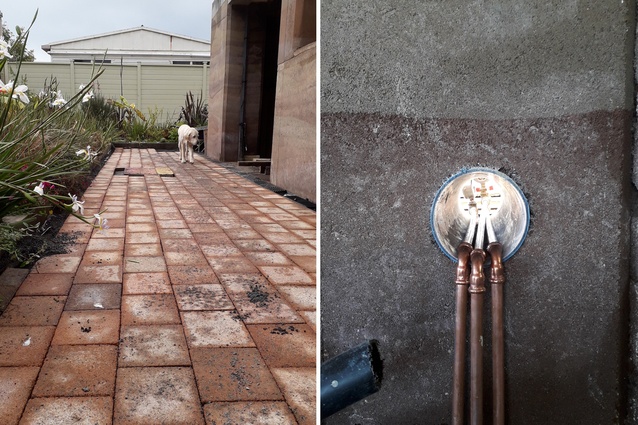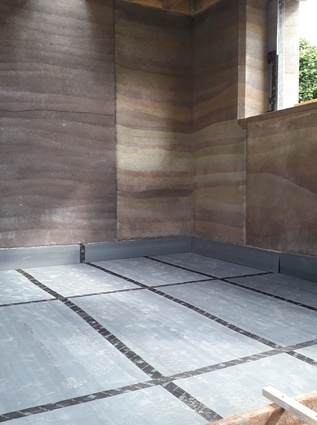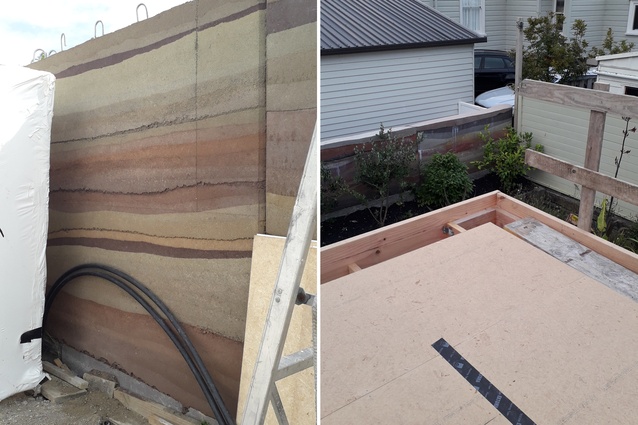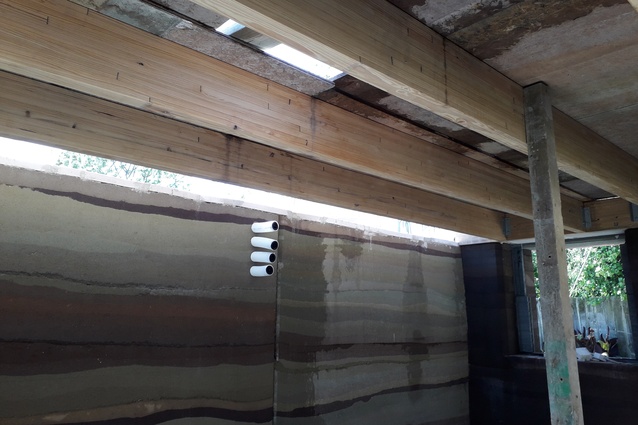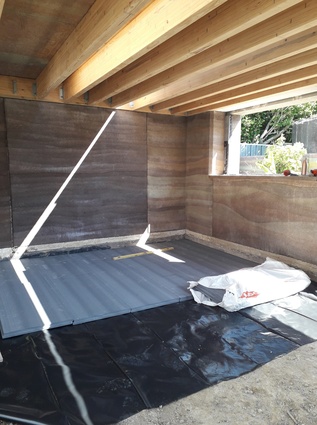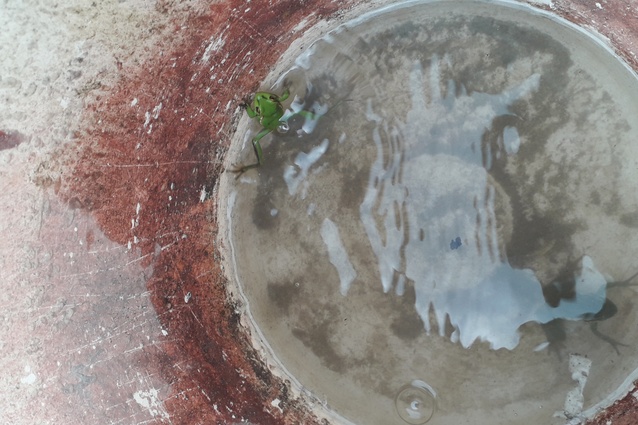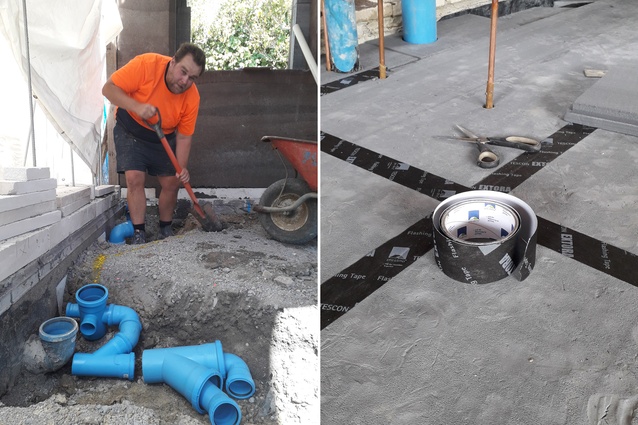The Living House: February 2019 edition
The Living House is a project that Rochelle Payne and her family have taken on to build a Passive House in Beachlands, Auckland. They are pursuing three sustainability rating standards for their home – Homestar, Passive House and Living Building Challenge. Rochelle brings us an update on the progress of the house during the last months of 2018.
After our last update, a few helpers came to assist us in installing our amazing Hyne Glulam beams from New Zealand Wood Products. We managed to get enough of the Hyne timber beams in place, as well as the reinforcing steel, to allow the concrete to be poured for the bond beam of the one bedroom apartment. Progress, finally!
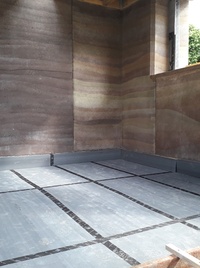
Since the hard work on the building site was beginning, we were ready to open the Living House building site (as well as our existing house, the House of Payne) for the Superhome Movement Auckland Tour Open Day on 29 September 2018. What an amazing day it was. We estimate around 150 to 200 people came through so they could learn about zero waste living and green building – an incredible turn out.
The weather in October was quite delicious – we probably talk about the weather too much in these blogs, but when you are building with earth materials, dry weather is important. After the big push to get the roof beams and bond beam done by the Open Day, Joel ended up having most of October off ramming duty, with only one piece of wall completed during the month.
For the section of wall that we did complete, we tried out a new and exciting mix: white cement from Peter Fell. We plan to switch to using white cement on the main part of the house so we can try and achieve some lighter shades.
Strides were made inside the one bedroom apartment, even though the walls haven’t quite been finished yet. As we are hoping to move into this little unit in early 2019, we needed to get everything moving along. Therefore, while Joel has been building walls (and skiving off to the Earth Building Conference), I was working working hard trying to get the floor inside the unit level.
A complete and utter mistake early on in the piece – in which Joel said, “Can I just put the Hebel on top of the footings instead of inside it?” And I said, “Yes I don’t see a problem with that.” – has lead to massive issues. If we weren’t targeting a Lifemark rating then it wouldn’t be a problem. However, we are. Therefore, we need to create a level transition between the inside and outside.
Originally the plan was to just build the floor level up to cover the Hebel, but that would have resulted in a huge step between the inside and the outside, which isn’t allowed for Lifemark. Since the Bobcat and digger won’t fit inside anymore, we had to dig out approximately 100mm of built up and compacted earth by hand from inside the apartment.
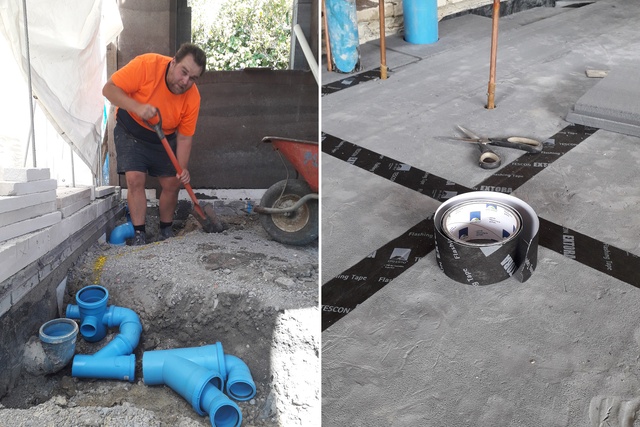
While we were working hard at that, the plumbers were also on site installing the awesome, non-PVC dBlue plumbing provided to us by Marley. We are using the dBlue as waste pipes in place of the toxic PVC that most houses utilise.
November was another busy month. Some swift progress was made, and we managed some firsts for the Living House. It was certainly the first time I got a fright from frogs while on site. That was not a pleasant surprise. I was reaching into a bucket to grab another beer bottle for the bottle wall when I realised that the bottom of the bucket was moving. Two little frogs were in the rainwater at the bottom of the bucket, trying their best to get out.
We also had our first major success with Civil Share: an app that connects people wanting to get rid of things with people who need things. One user, Blair, was trying to get rid of 1500 old pavers from around his pool, and we wanted some pavers to go around the one bedroom apartment. Civil Share helped us save all of them from landfill.
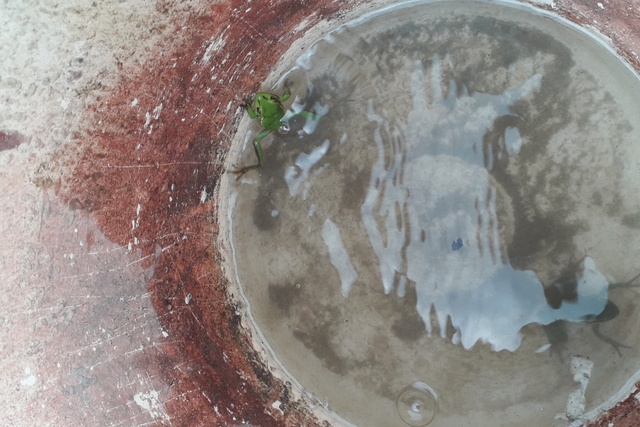
In another first, we managed to put our first penetrations through the rammed earth walls. We have four ducts for our Zehnder system (supplied by Fantech) through the top of one rammed earth wall with the Marley dBlue through the bottom of the same piece of wall to allow our hot and cold Kembla copper pipes to come through from the garage.
Our new hot water heat exchanger, a Spirex energy drain, also got delivered thanks to Vaportec – you can check them out here if you want one of your own. We are excited to have this on site and can’t wait to start capturing waste heat from our hot water and use it to pre-heat the incoming cold water. Reusing waste is what we are all about here at the Living House.
Of course, one big piece of excitement was the start of putting down the roof. Most of the Hyne beams were already up. Then, it was time for the new Laminex Strandsarking. This is the Living House, though, so nothing is going to go smoothly.
We had nominated the use of 19mm plywood on our consent drawings for our warm roof substrate, but we decided that it would be better to swap it for the Strandsarking.
This probably would not have been a problem if I could have managed to get Auckland Council to talk to me. However, despite many emails, text messages and phone calls, I struggled to get anyone to talk me through if the roof changes could be treated as a minor variation that could be dealt with on site or if they needed to be an amendment.
Finally, I gave up and booked a site meeting to at least get somebody here so I could talk to them. We ended up with Steve from Carterton who was helping Auckland Council out with workload, but also has experience in rammed earth houses. Steve said that, unfortunately, we needed an amendment for the proposed changes and that work on the roof would have to stop until the amendment came through.
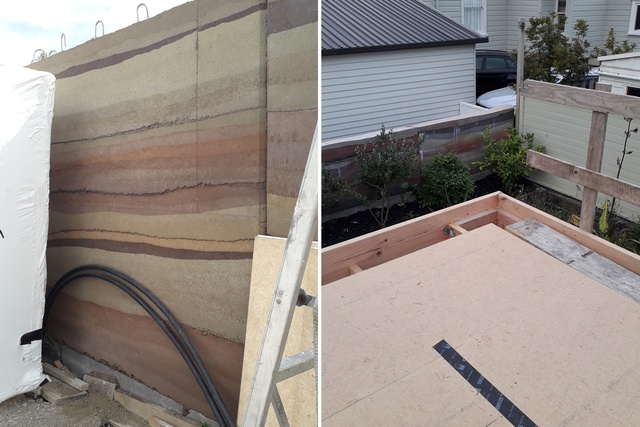
Of course, I don’t really take no for an answer. I immediately lodged the amendment and tried to find a way that we could proceed with getting the roof on. I got good news when Auckland Council agreed that, whilst we still require an amendment, we could proceed with the works on site at our own risk (i.e. if the amendment is denied, we’d have to rip everything off and start again).
Laminex Strandsarking is BRANZ appraised and has been accepted by local councils as a plywood substitute before, so precedence has been established. A few other small changes had to be made to the roof design. We needed to (i) include a vapour barrier (it is a standard part of the Equus system, but we didn’t have it on our consent drawings as we weren’t working with Equus back then); as well as (ii) delete the EPS-profiled foam that was going to create the roof slope (have you ever tried to find Red List-compliant EPS foam?) and to use FSC, Red List-free timber to create the roof slope instead. Changes, changes, changes: all problems, problems, problems. Time will tell how it all pans out.
We did get all the in ground plumbing in, and we have managed to get the DPM and insulation down and taped for airtightness. The next step is to put in the earth floor. Exciting!
Recently, our reused Rimu (salvaged from the skip bin of a house renovation of a friend down the road) interior walls have started to go up. We can then get the plumbers in for a second fix, the sparky and ventilation team in for a first fix and then get the walls of the bathroom tiled.
Keep watching this space for more updates on the Living House project and visit their website for more information.
Read the introduction to the Living House blog here, the second update here, the third post here, the fourth post here and the fifth post here.

